There are two places that I’ve visited this year that crept up on me slowly, hit me hard and now have a strangle hold on my heart and my mind. Cape Town was the first, Iceland the second. Neither place grabbed my imagination immediately. My first Iceland post below bears that out…had it been a two day trip I would have enjoyed it, logged it and left it behind. The remainder of the trip was when it became clear you just can’t leave Iceland behind. It’s been six weeks now and I still think about it daily. Nostalgia isn’t healthy. It’s about time I finished this to lay it to rest, if only so I can post about South Africa.
Day 3 - Road to Vik
My expectations as we got up and packed on the second morning were for more of the same. Ksen had put the itinerary together - she’s organised, I’m organic - so I just drove where I was pointed. We left Ion behind and began the drive South towards Vic. South of Reykjavik Route 1 widens out to motorway heading down the spectacular hillside towards Hveragerdi before flattening out through the town of Selfoss (which is nowhere near the waterfall of Selfoss…) and grasslands filled with Icelandic horses around Hella before reaching the turning for Seljalandsfoss. It’s a fairly long drive - about an hour and half from Ion - but through landscape that puts you in mind of the Steppes or Prairies rather than whatever preconceptions of Iceland you come here with. Seljalandsfoss itself is one of those waterfalls you can get up-close-and-personal with. Nowhere near on the scale of Selfoss in terms of width and water, but higher, narrower and infinitely more beautiful. As we pulled into the carpark there were no coaches and only a handful of cars. Thank fuck for the Golden Circle. It was starting to make sense to me now. Keep everybody going around the Golden Circle keeps everywhere else relatively clear. We walked in and around the waterfall, spray soaking us to the bone. It was a million miles away from the viewing platforms and safety ropes of Selfoss.
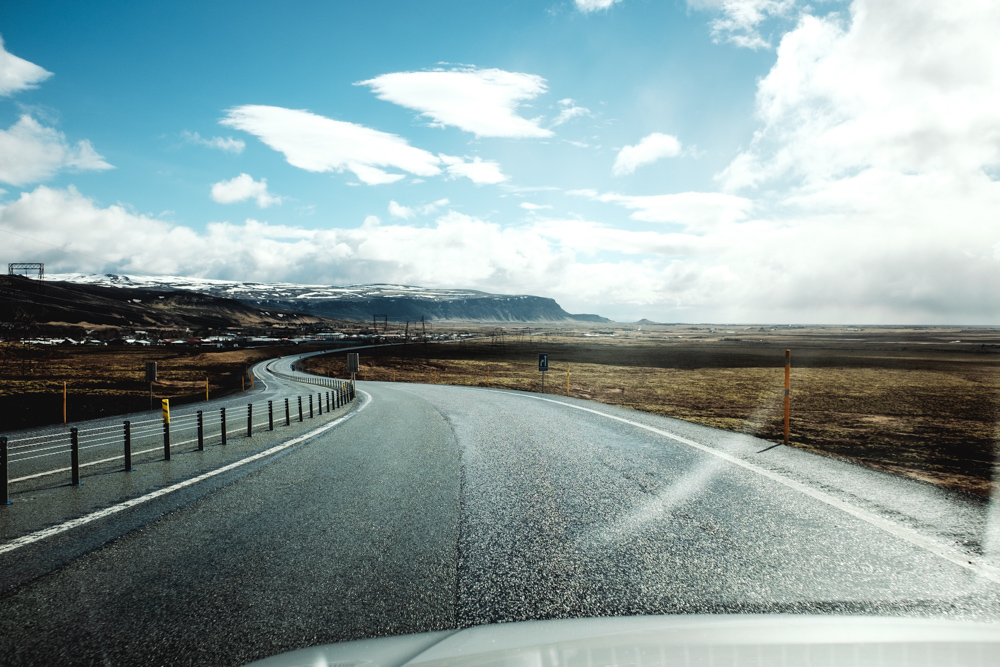
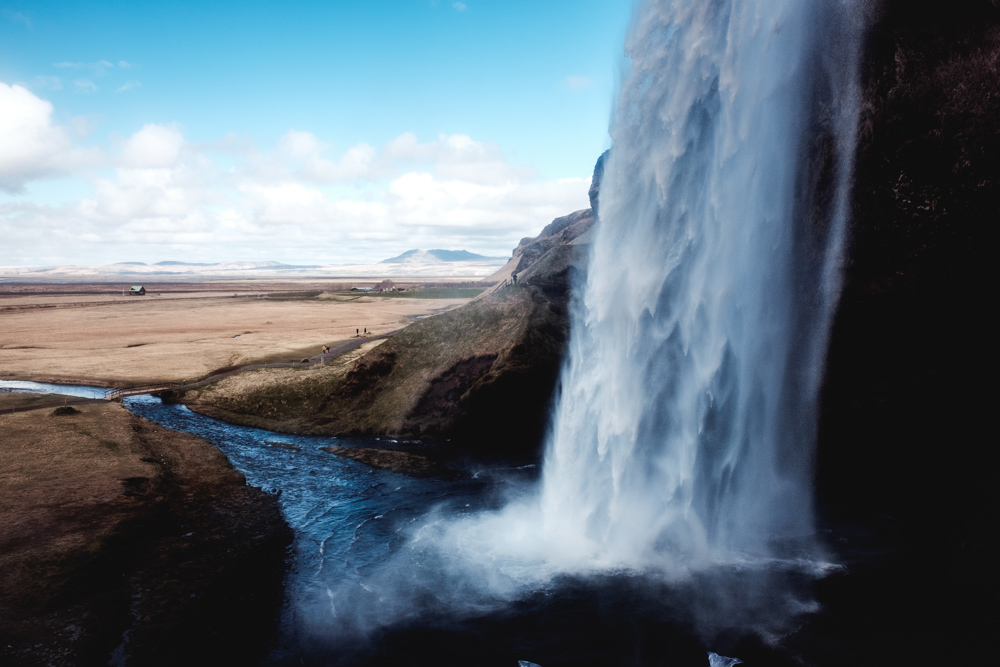
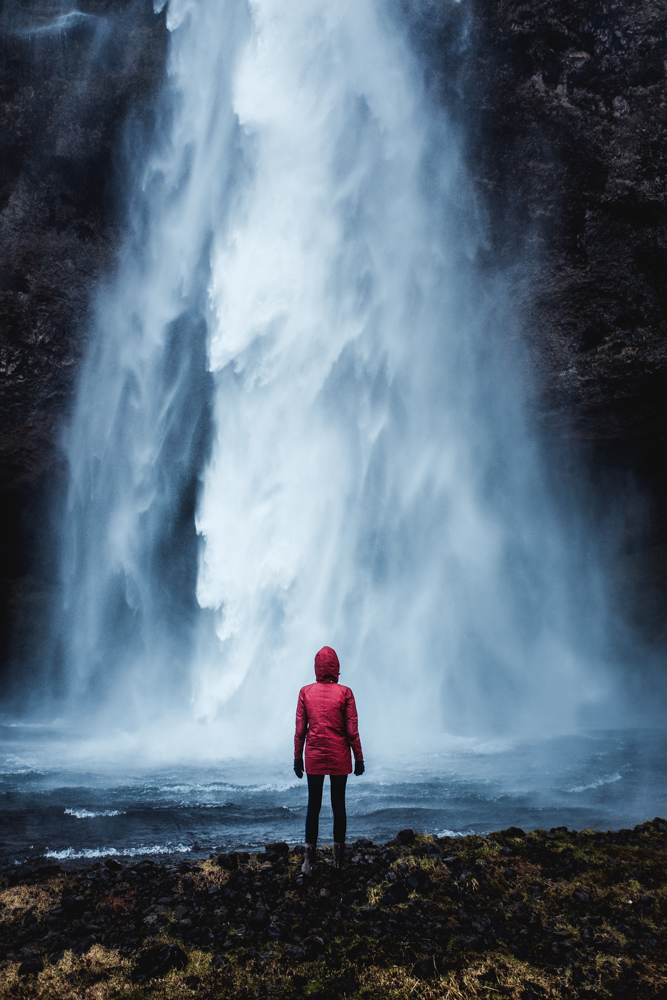
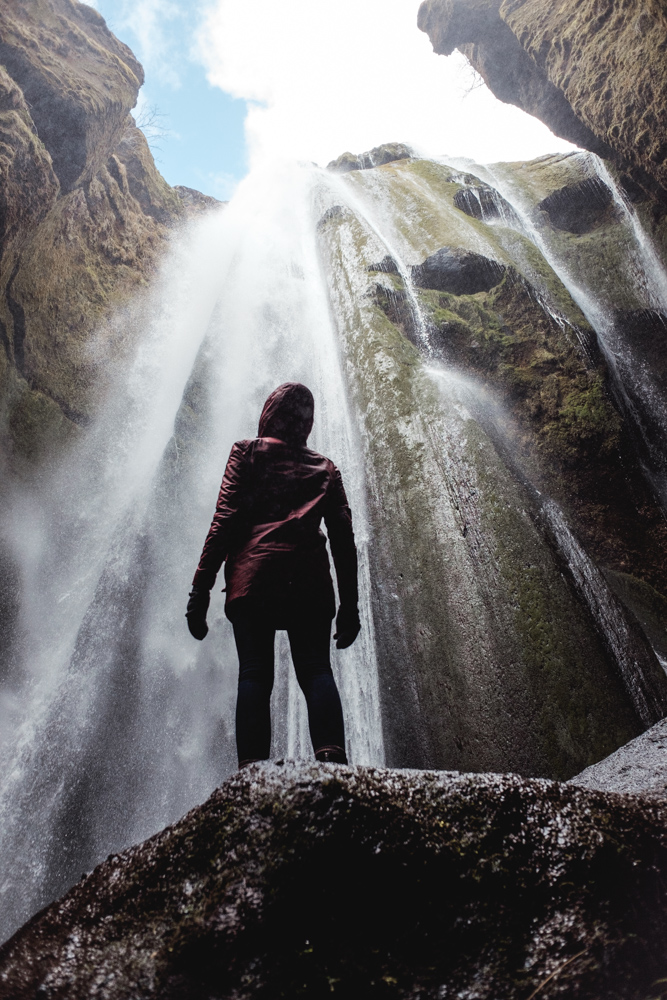
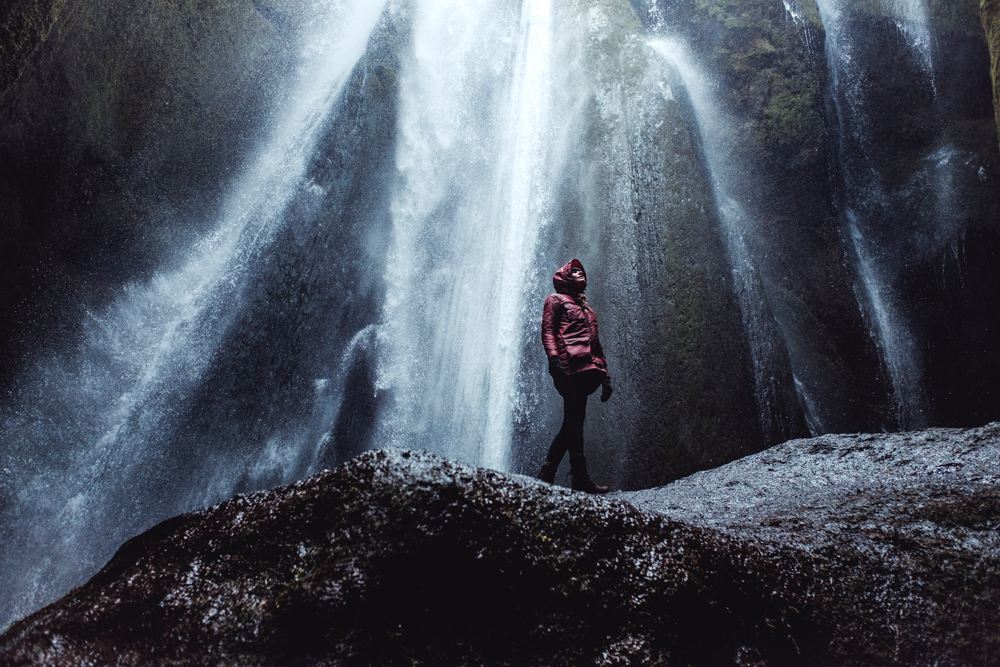
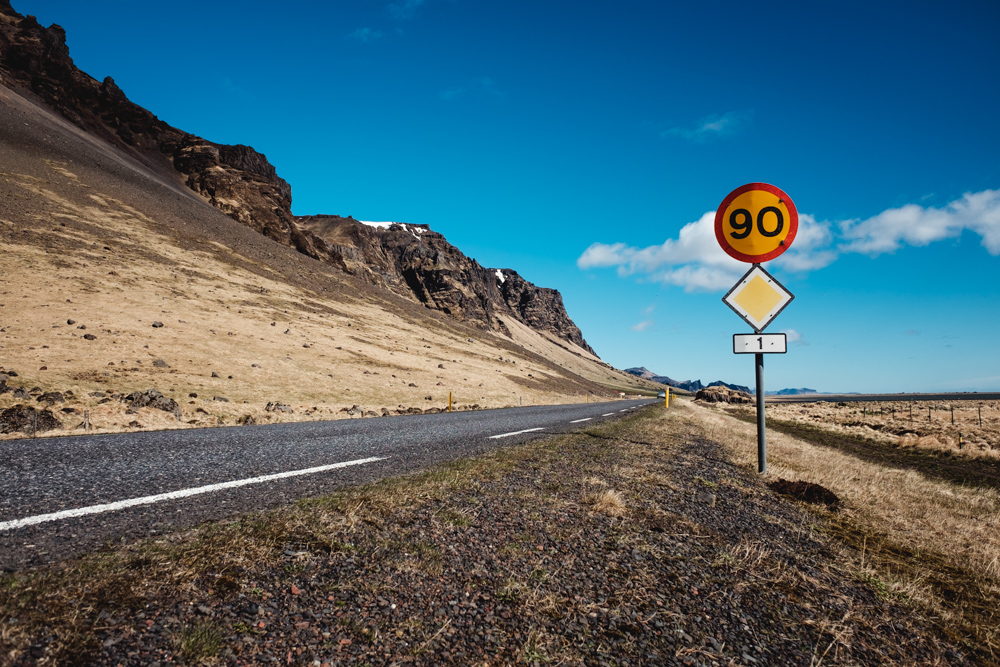
From here we meandered along the ring road, clear blue skies and bright sunshine. The walk from the road to the plane is probably about an hour across a martian landscape of black rocks. We managed to make it last closer to two hours taking photographs and - at one point - managing to fulfil a client request for hi-res files via 3G. I can’t even get 3G between Huddersfield and Manchester. The plane itself is a skeleton now - silver metal decaying on the black beach. It’s a most surreal sight, the only man-made object you can see from horizon to horizon.
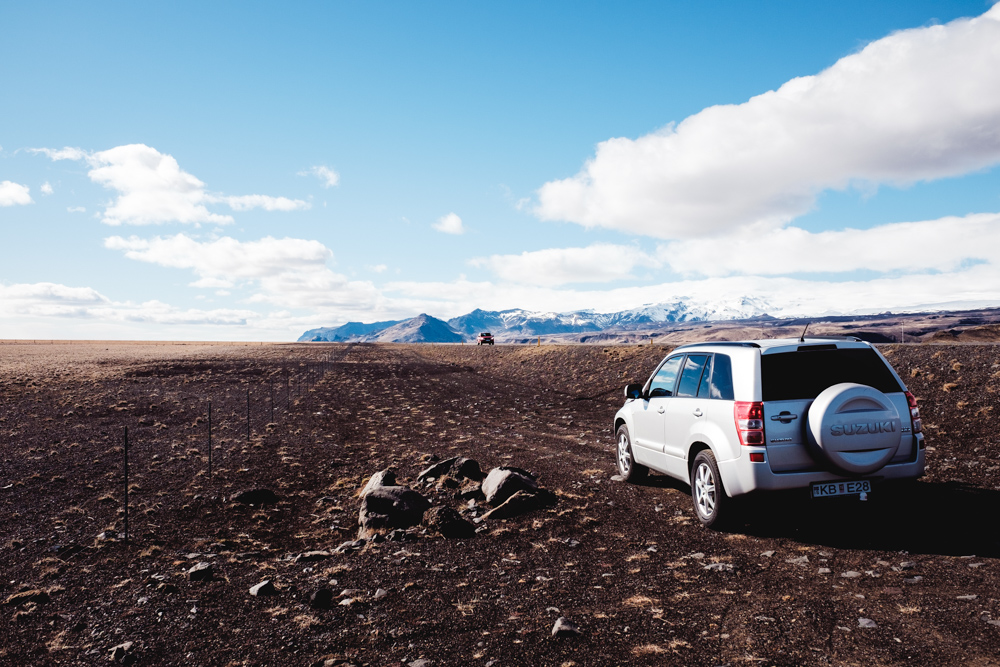
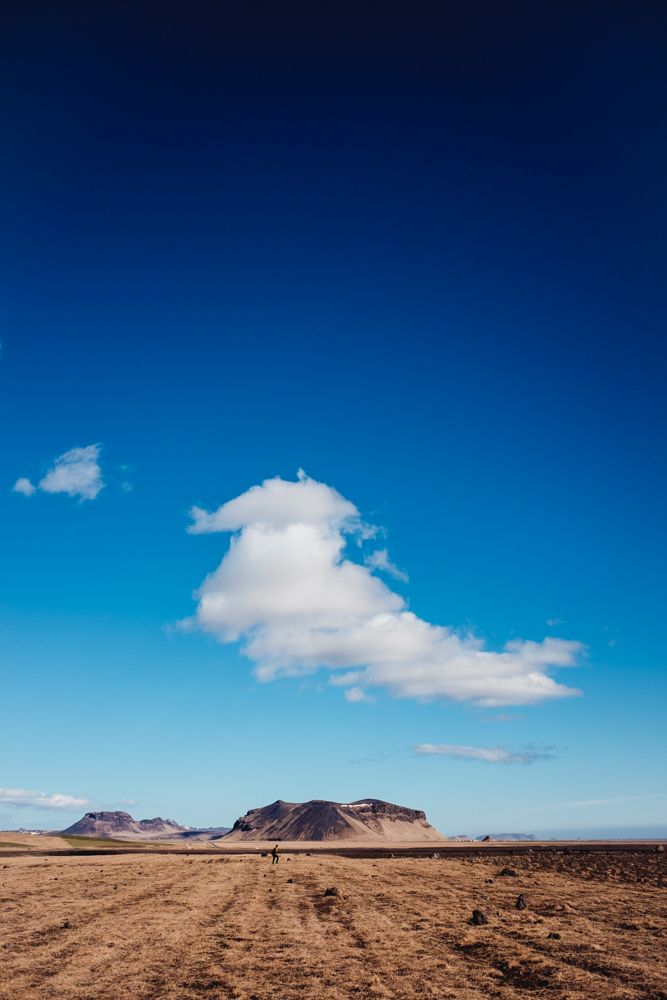
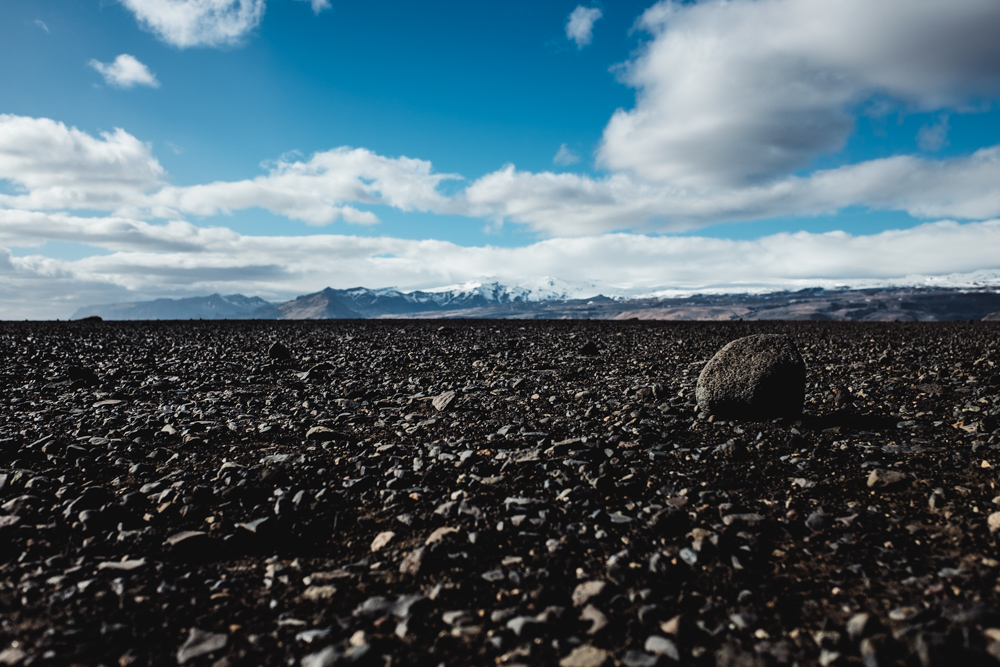


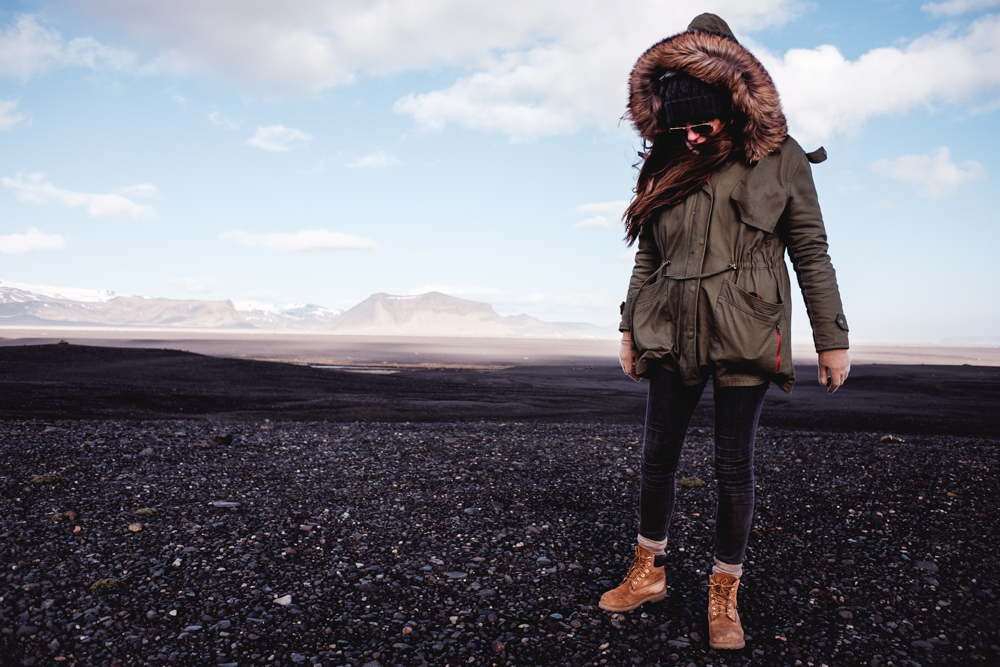
Then the drive to the beach at Reynisfjara where the white Atlantic breakers crash in over the black sand. We climbed down to the beach and saw one other couple as we walked along. It’s the most serene beach I can remember.
A short drive around the next headland and you reach tiny Vik, Iceland’s most southerly town. If you head due South from here the next thing you hit is Antarctica. That’s over 9,000 miles of ocean between you and land. This fact, like everything else in Iceland, gives you a new perspective on the world and your place in it.
We found a small restaurant and ate (lamb, naturally) before driving back through the long dusk to our home for the next two nights in Borgarnes. It was a three hour drive back the way we’d come that morning, but darkness didn’t come fully until well after 11.
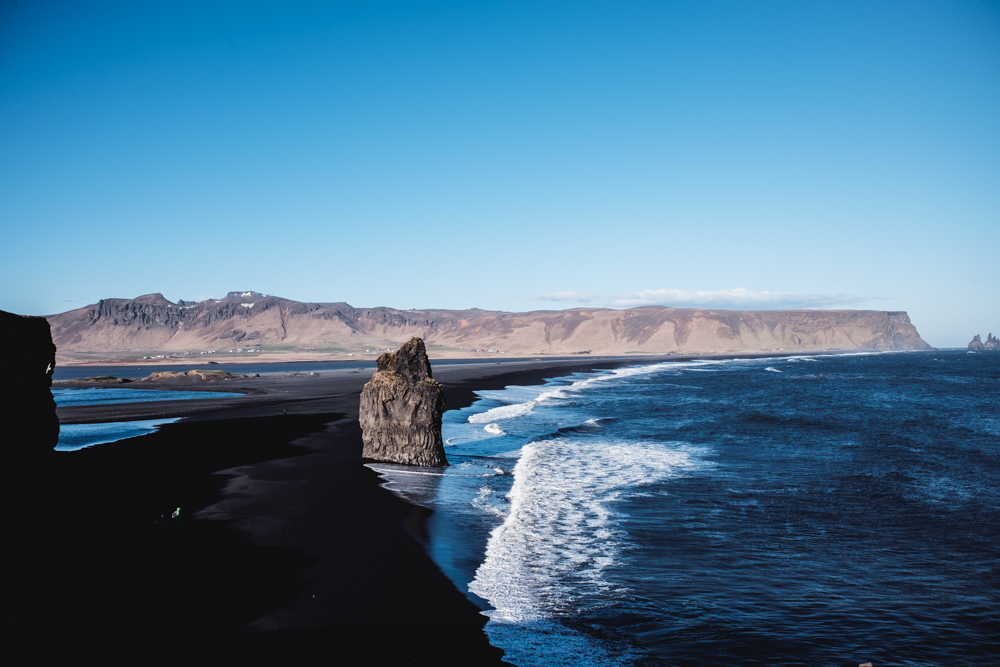
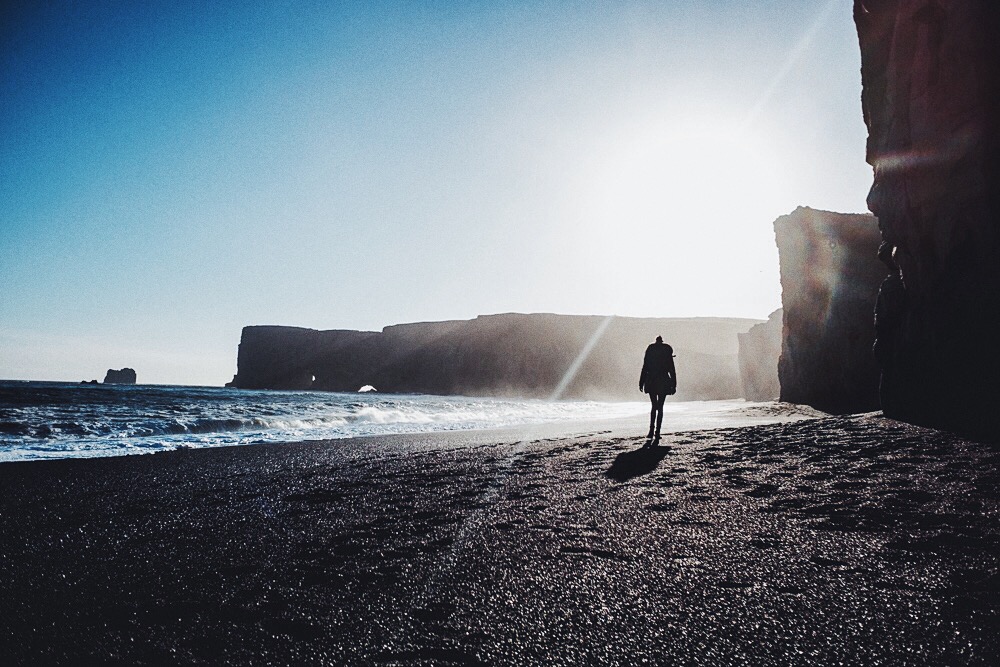
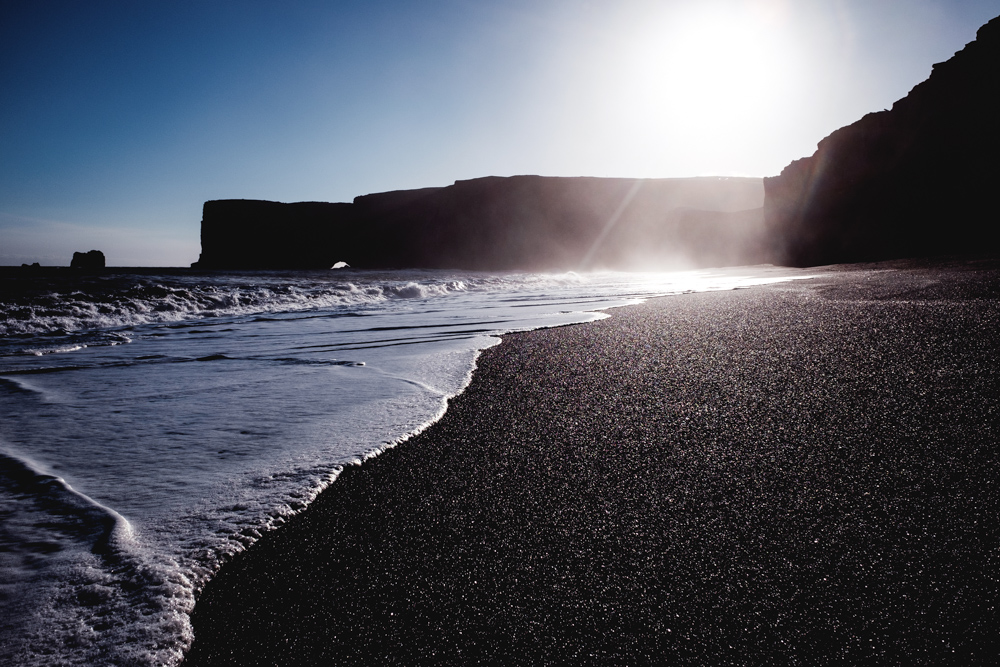
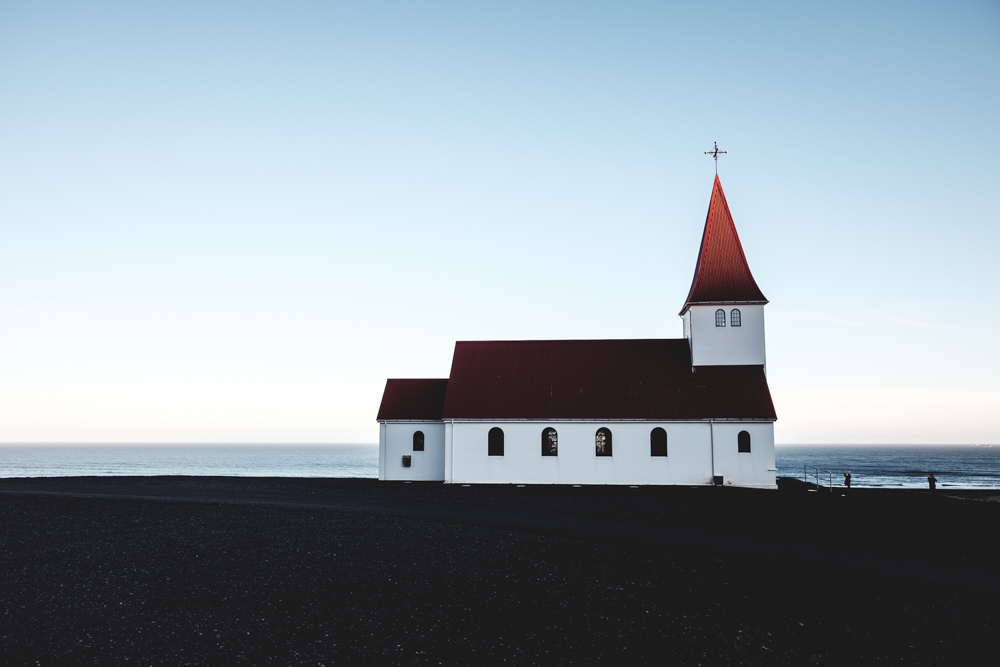
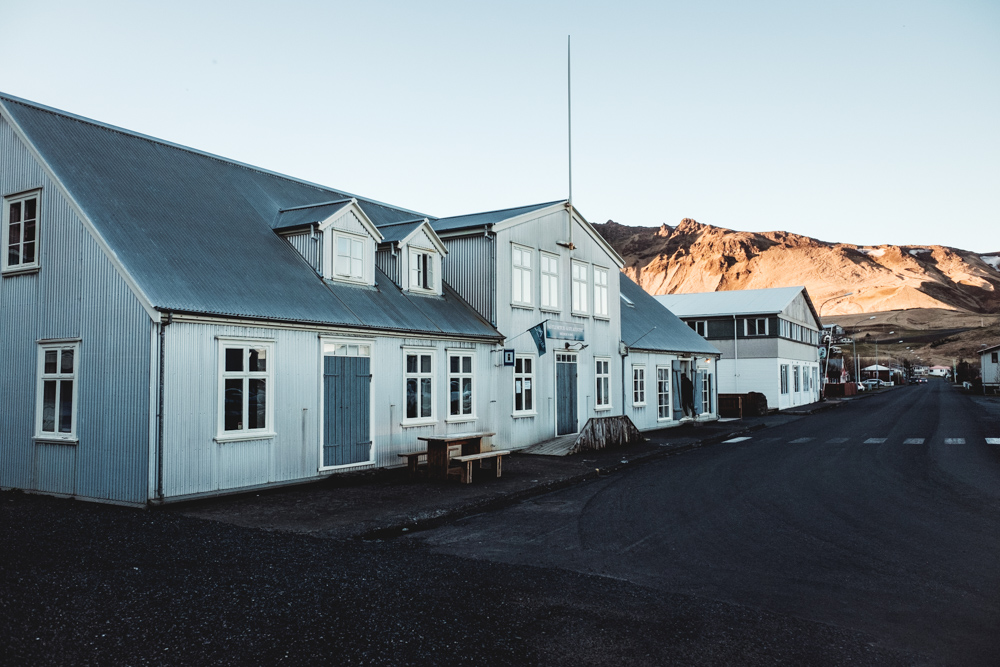
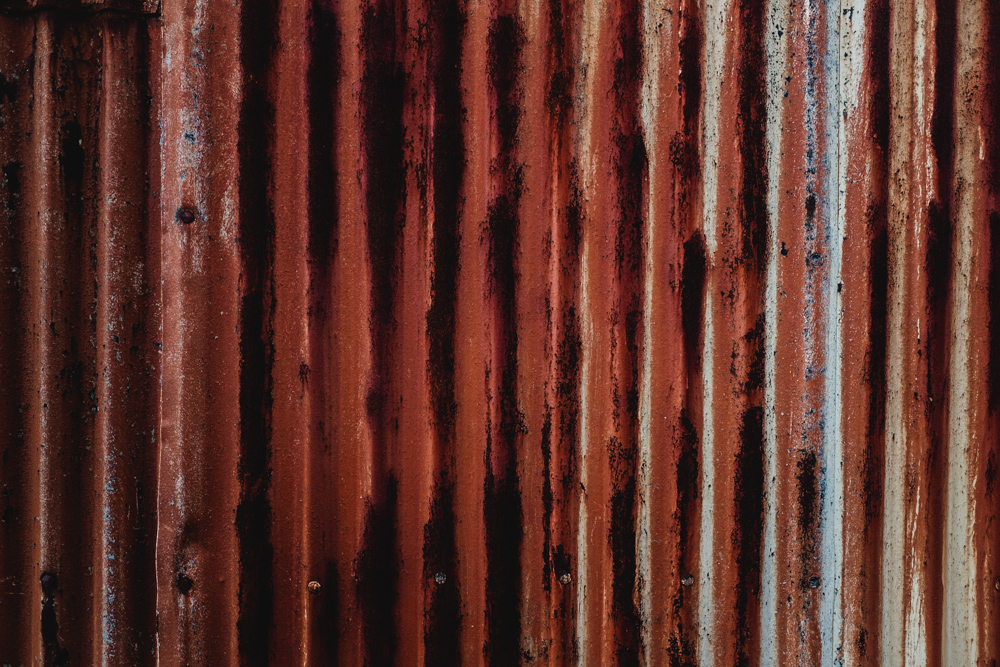
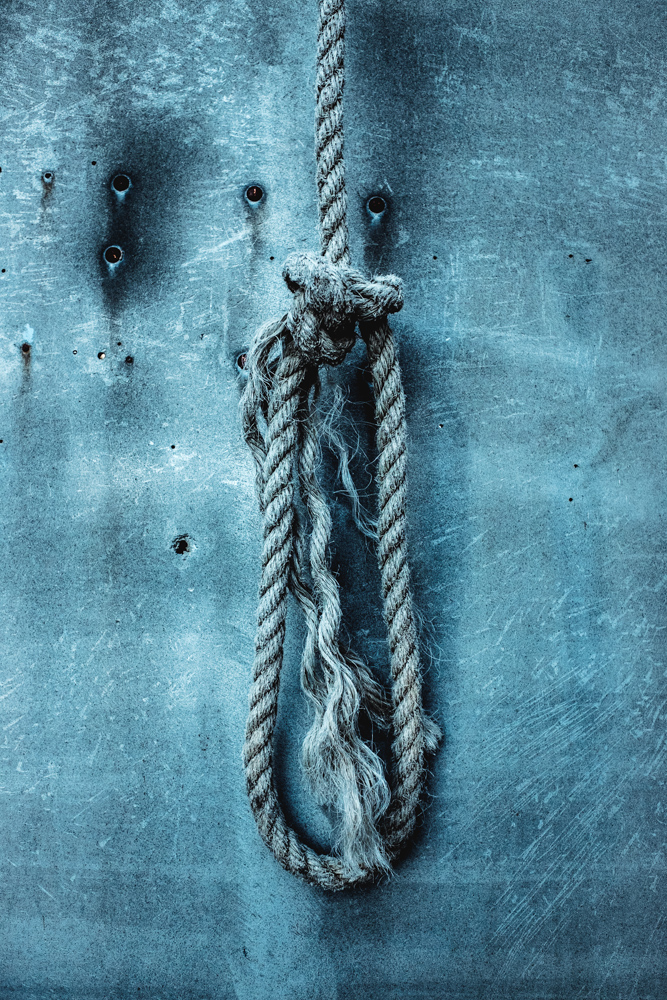
Day 4 - Snaefellsness Peninsula
The next morning we woke up in a Pinterest board. I made a coffee in the pale blue kitchen of the beautiful black timber house and enjoyed it on the veranda overlooking the beach. The house is owned by Icelandic an interior designer Rut Karadottir (http://www.rutkara.is/en/the-book) and is something of a showcase for her natural grey tones and simple warm touches. We often use Airbnb in this way - to experience amazing and unique properties - and Rut’s house was a perfect base for the remainder of our travels around Western Iceland. The warmth of her interior was a perfect contrast to the brutality of Ion’s exterior.
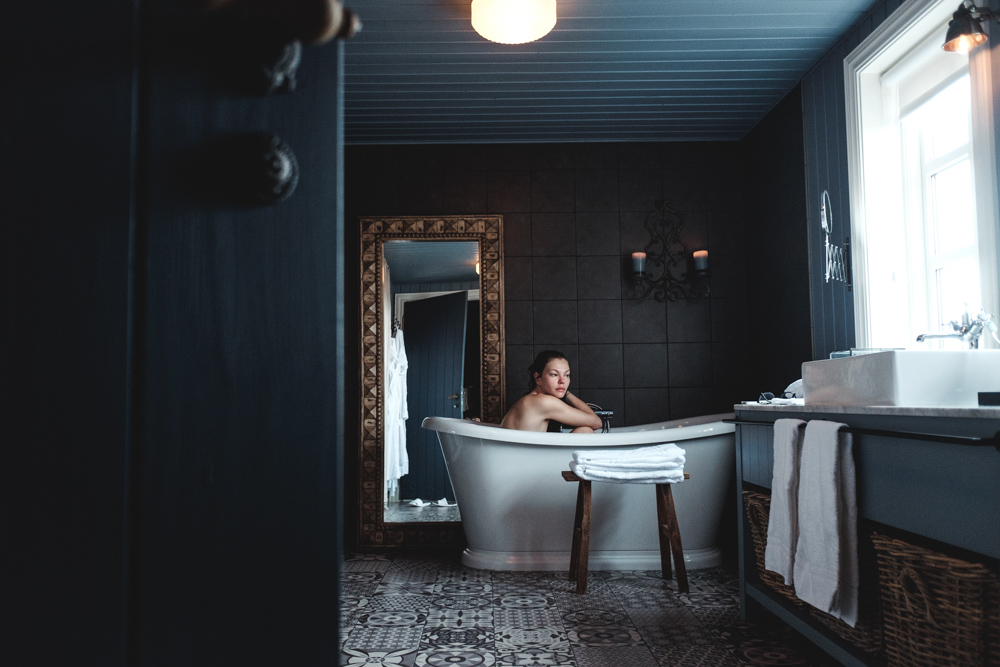
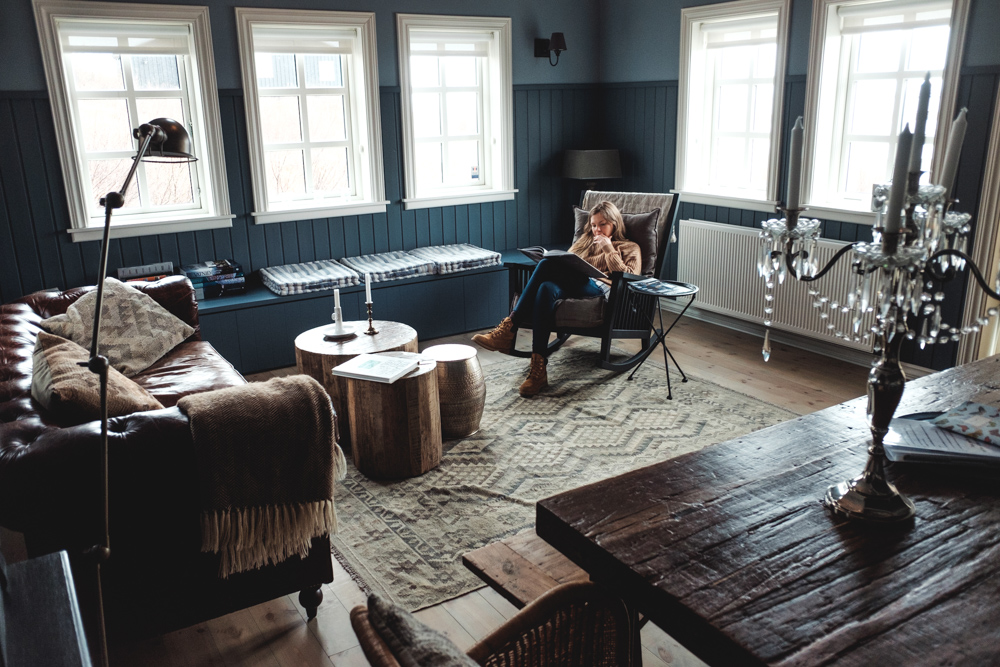
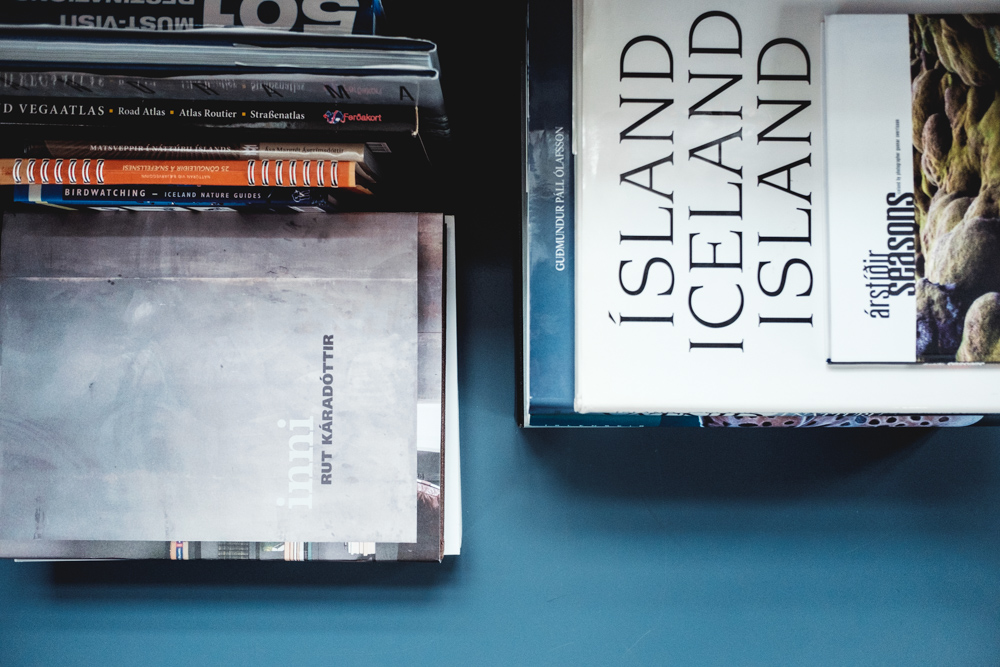

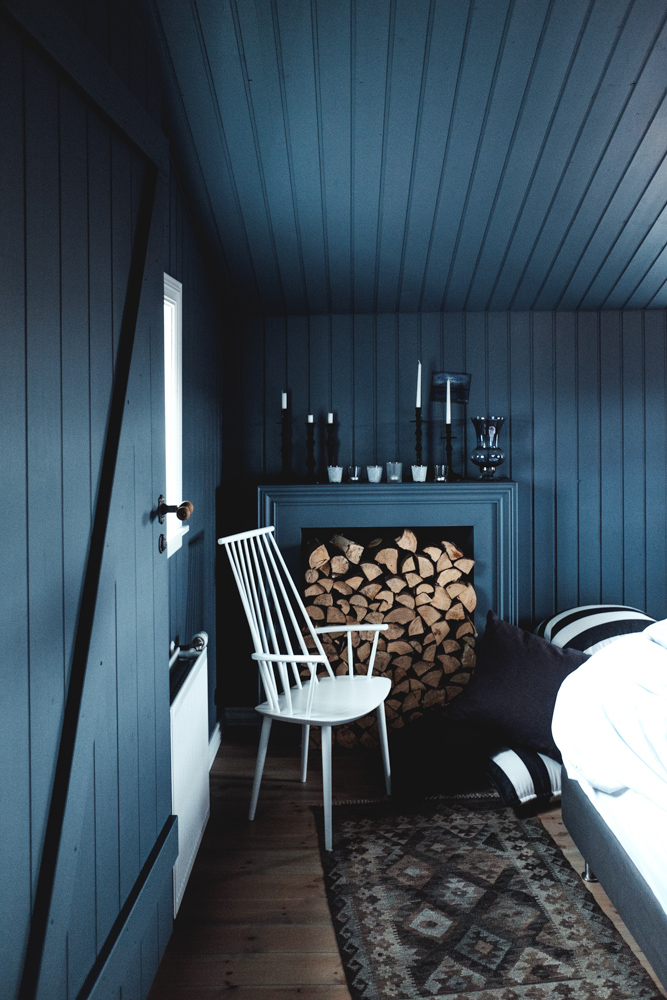
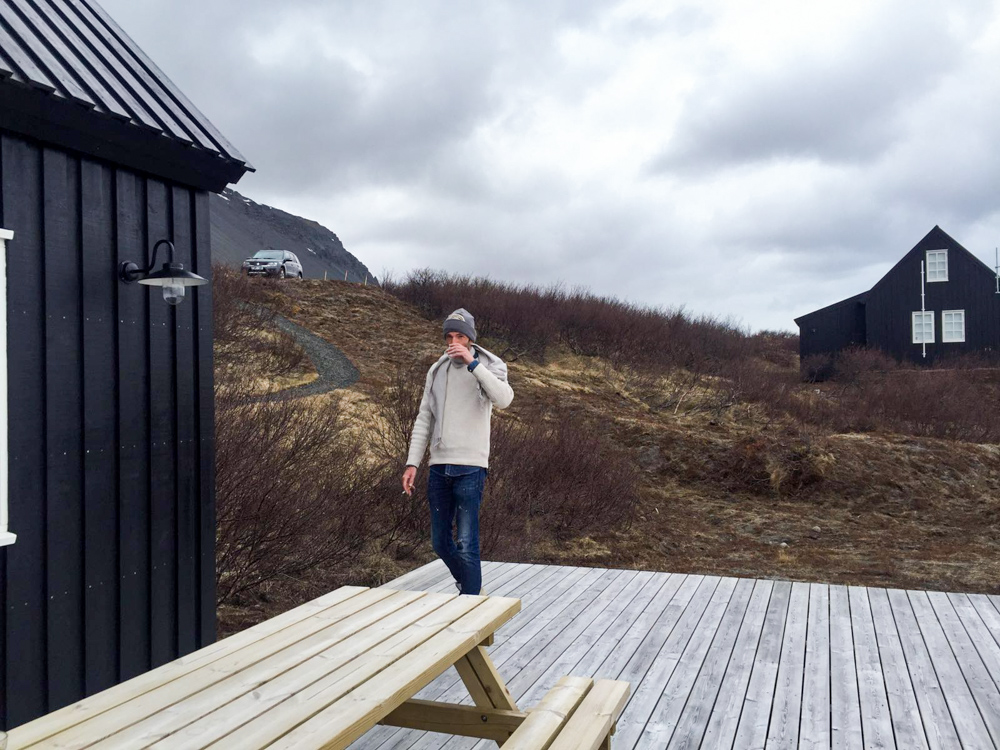
After breakfast in a cafe in Borgarnes we drove up Route 54 to the Snaefellsness Peninsula. The road cuts straight across glacial plains between mountains of moraine and through fields of lava. If the road to Vic had been relatively quiet, on Route 54 we passed another car maybe every 20 minutes. As the Atlantic winds tore across the peninsula I realised that in spite of (or maybe because of) the lack of singular ‘must see’ attractions that this was my favourite part of the island. It felt isolated and remote, far from the coaches and Reykjavik and the airport. The ribbon of black tarmac just continued to sweep through brutally carved landscapes with the sea perpetually in view. We drove for long stretches without seeing any signs of civilisation other then the road we were travelling on. The small towns or villages we did see were different too - lower, hunkered down against the winds that hammer the peninsula. Wherever the road hugged the coastline you were reminded of exactly where you were - a lump of volcanic rock peeking up in the middle of the North Atlantic just a few degrees south of the Arctic Circle. Yes, you have to see the waterfalls and the plane wreck and Thingveller the same way you have to visit the tower at Pisa or the tower in Paris, but ultimately these things are already familiar even the first time you see them for real. You’ve seen them your whole life already in books, on TV and, latterly, on Instagram, Facebook and Pinterest. You already have expectations of them. Snaefellsness is just a whole lot of wilderness which, for most Western Europeans, is something completely new and a feeling which can’t easily be encapsulated in a photograph. I know, because I tried. It’s simply about being there, and it seeps into the primal part of your brain. Even writing this six weeks later I can recall it vividly. It’s a place that doesn’t leave you.
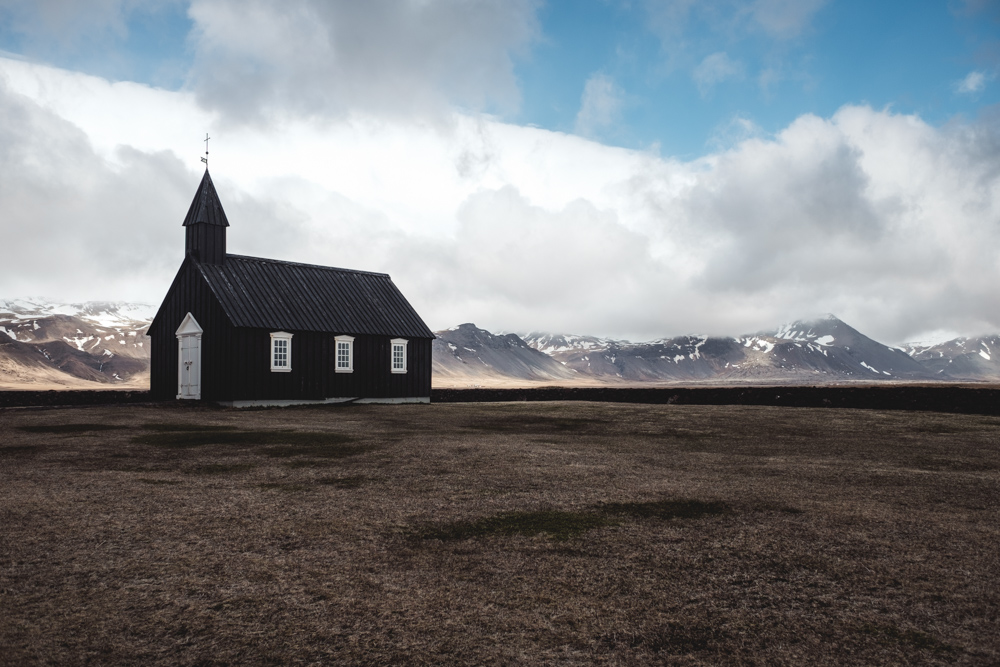
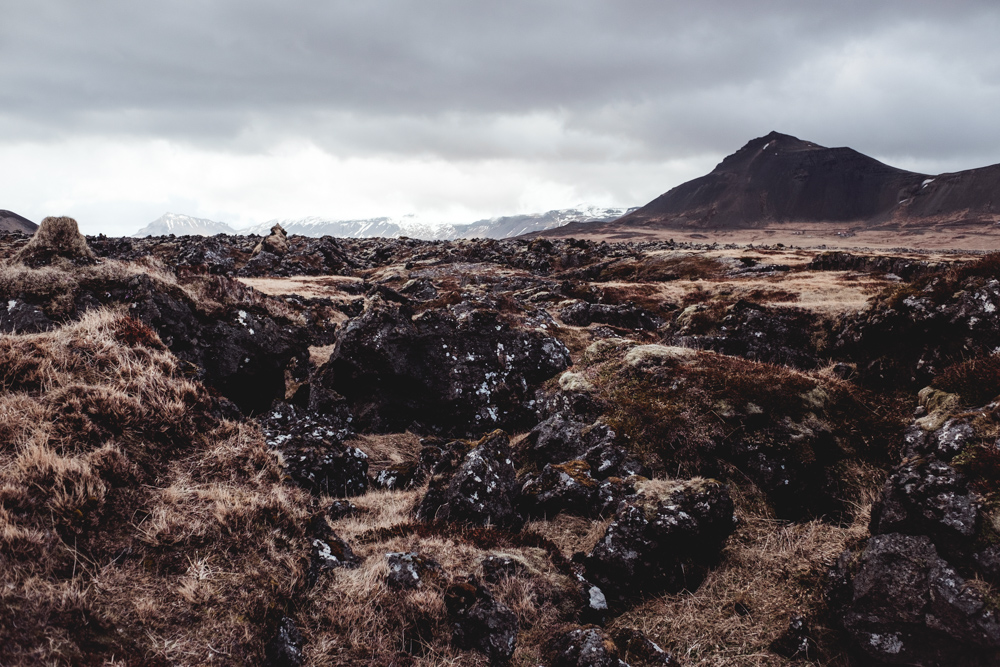
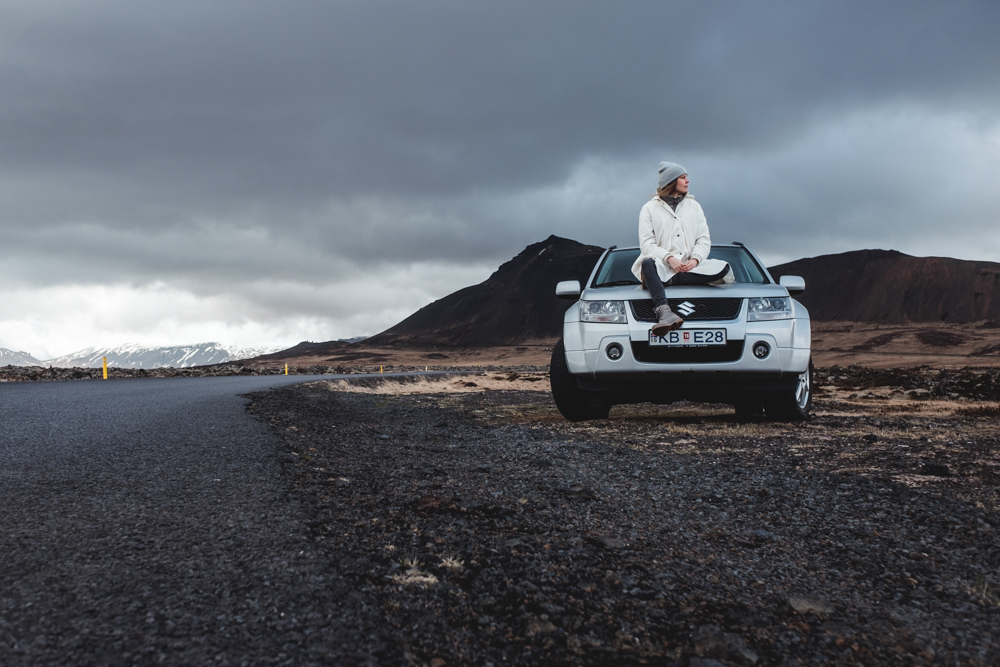
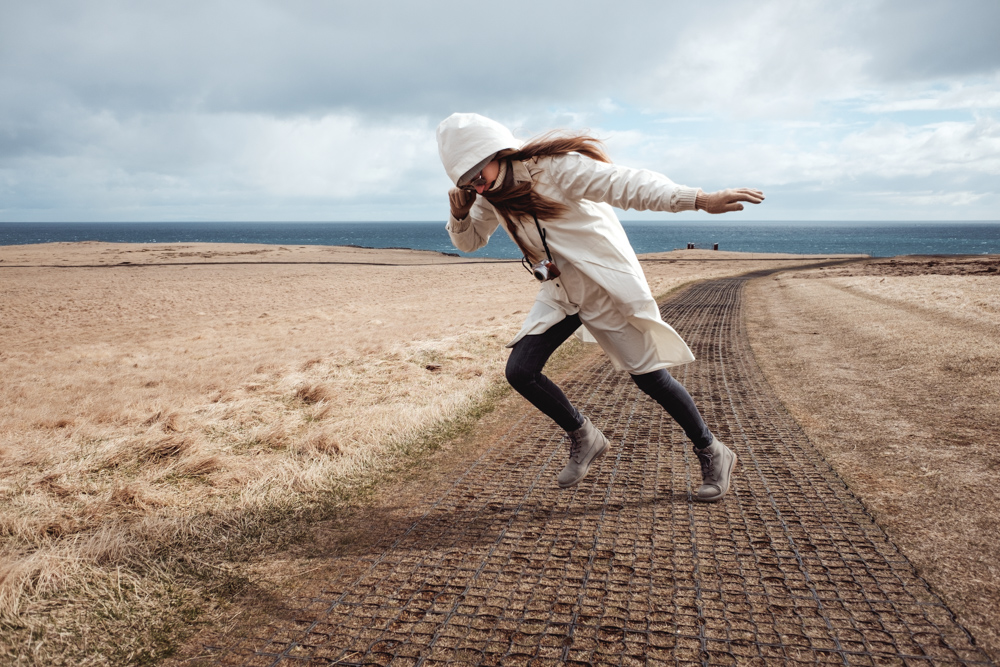
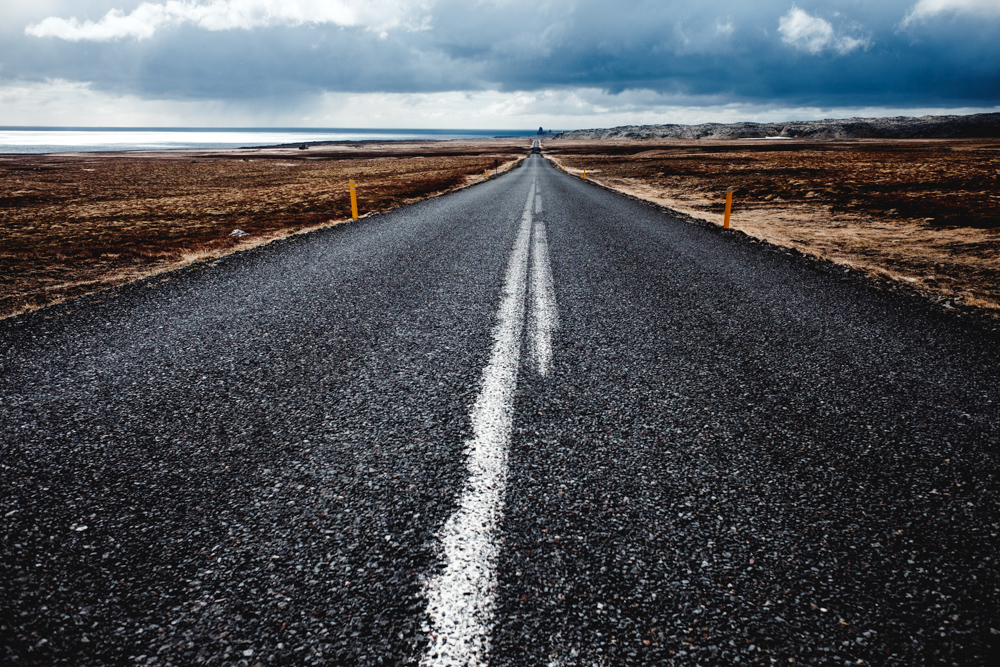
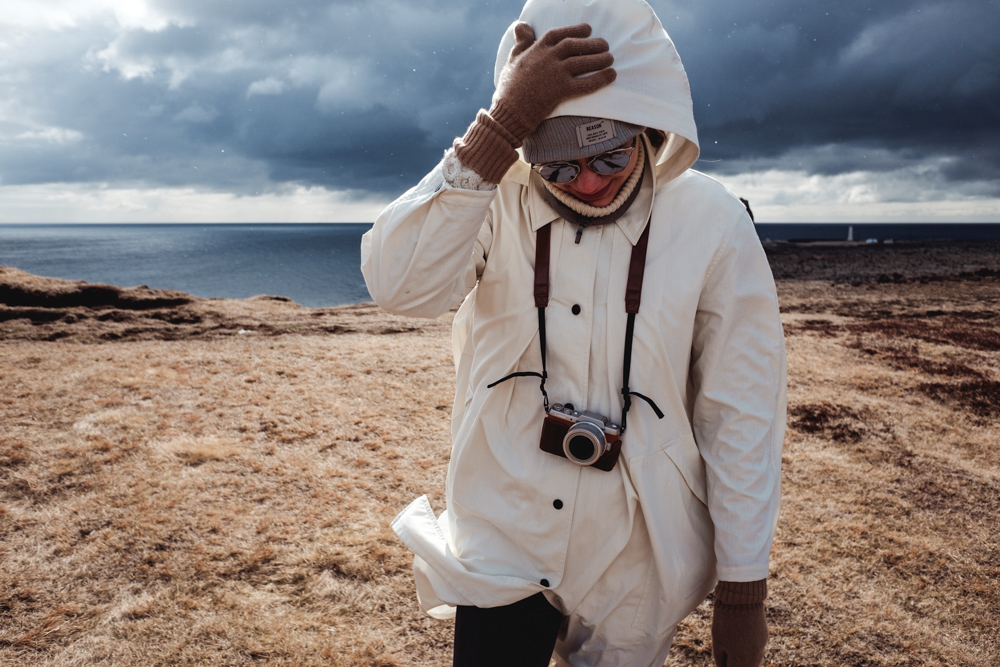
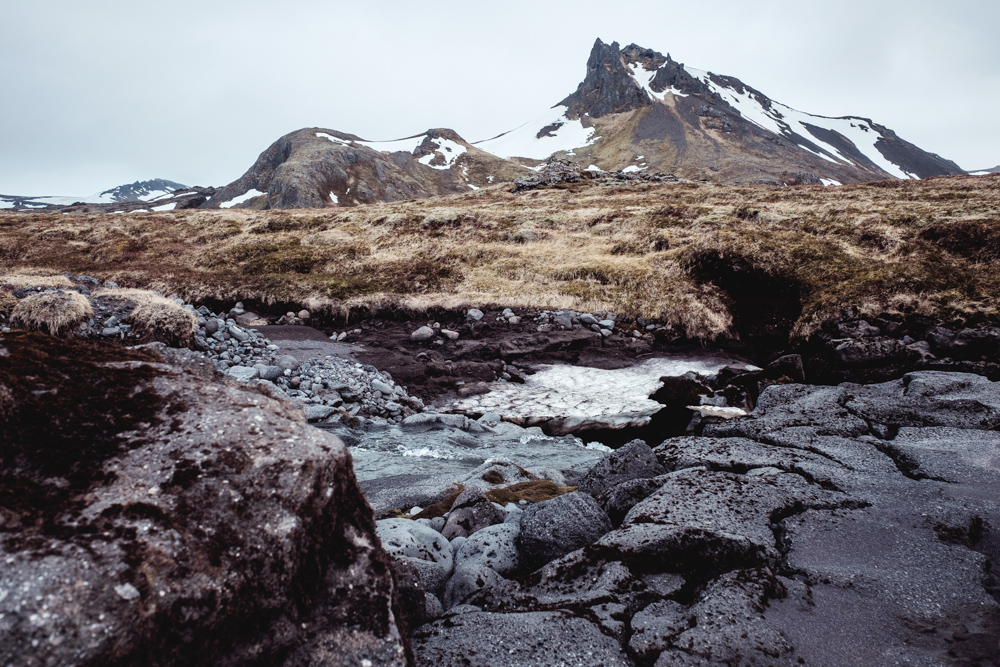
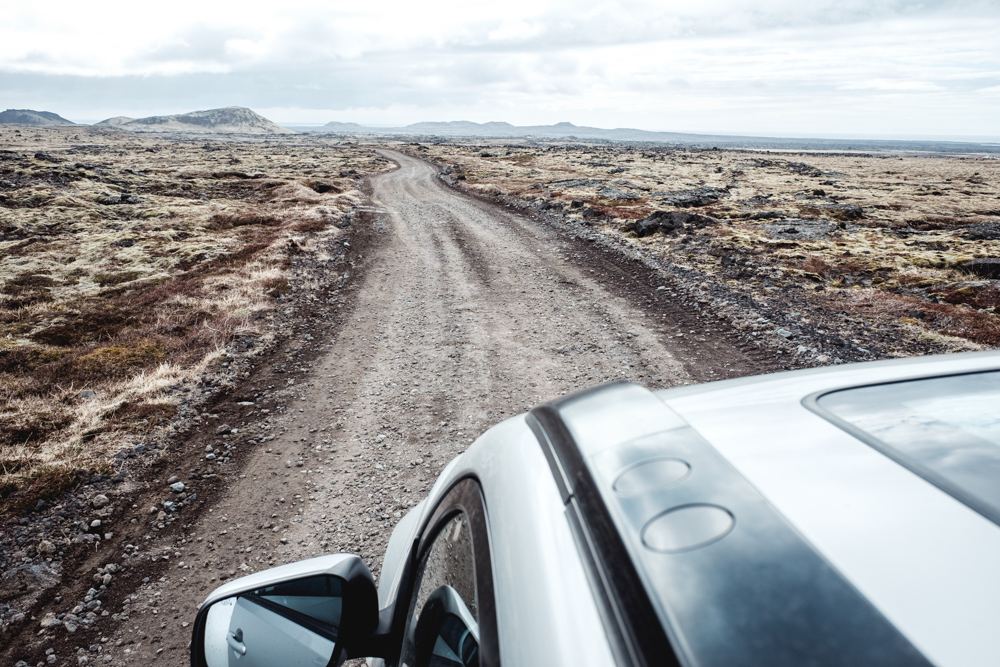
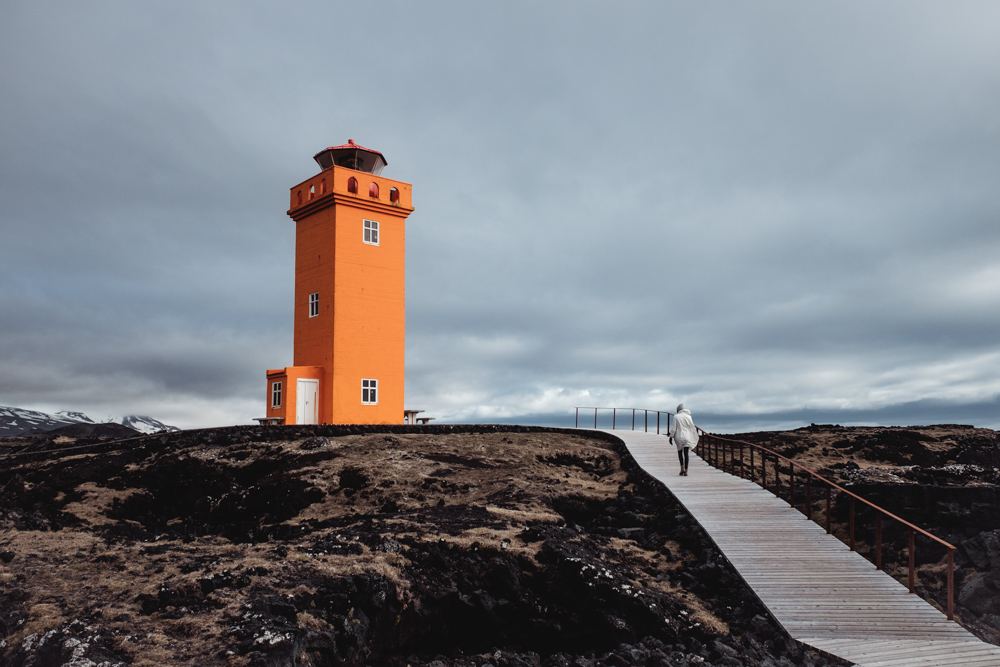
Our route took us eventually to Olafsvik. There’s nothing remarkable about the small coastal town, but still we stayed there for seven hours. Because our Lamborzuki broke. I glanced at the dash to check petrol as we drove into the town and saw the temperature gauge reading maximum. We parked up outside the sports hall and rang the company. They sent a mechanic over (he lived in the house opposite the sports hall - it’s a small place…) who confirmed the radiator hose was leaking. We were offered accommodation overnight but wanted to get back to our black wooden home - and so instead we went for a meal (lamb…) and waited. And waited.
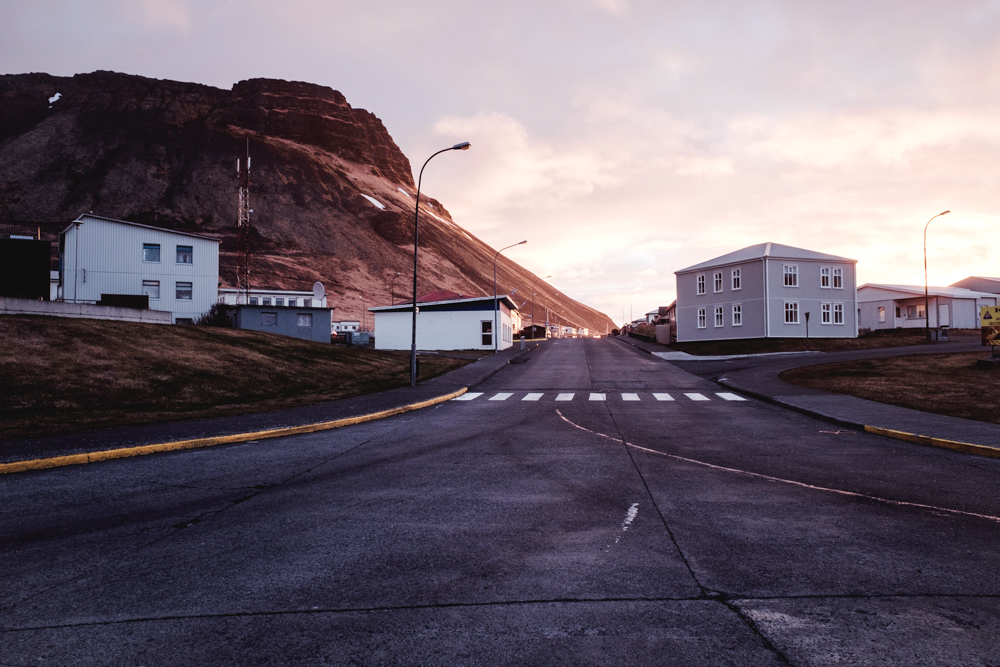
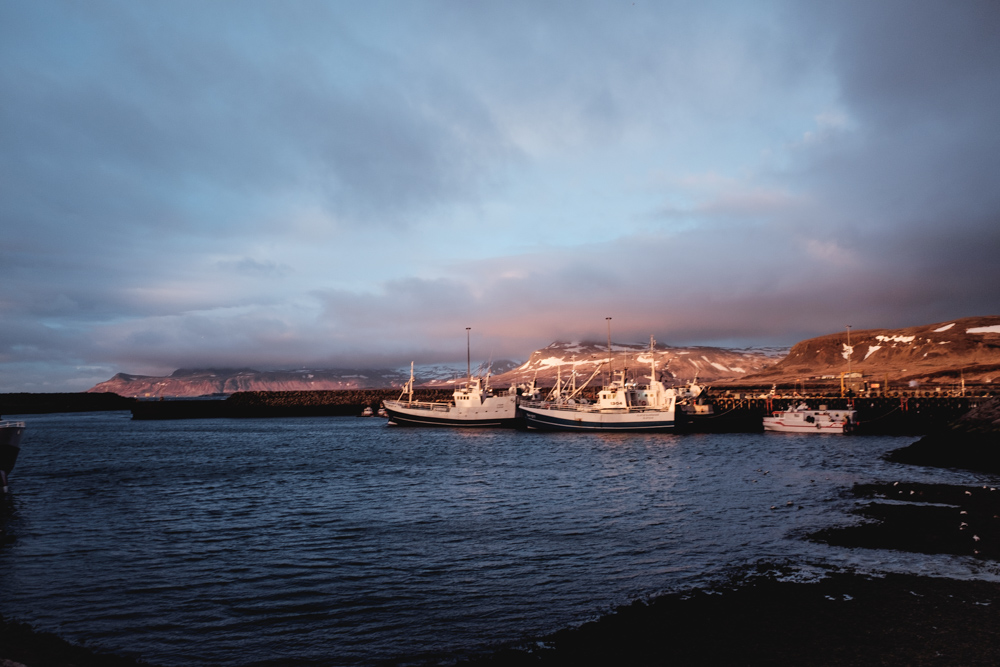
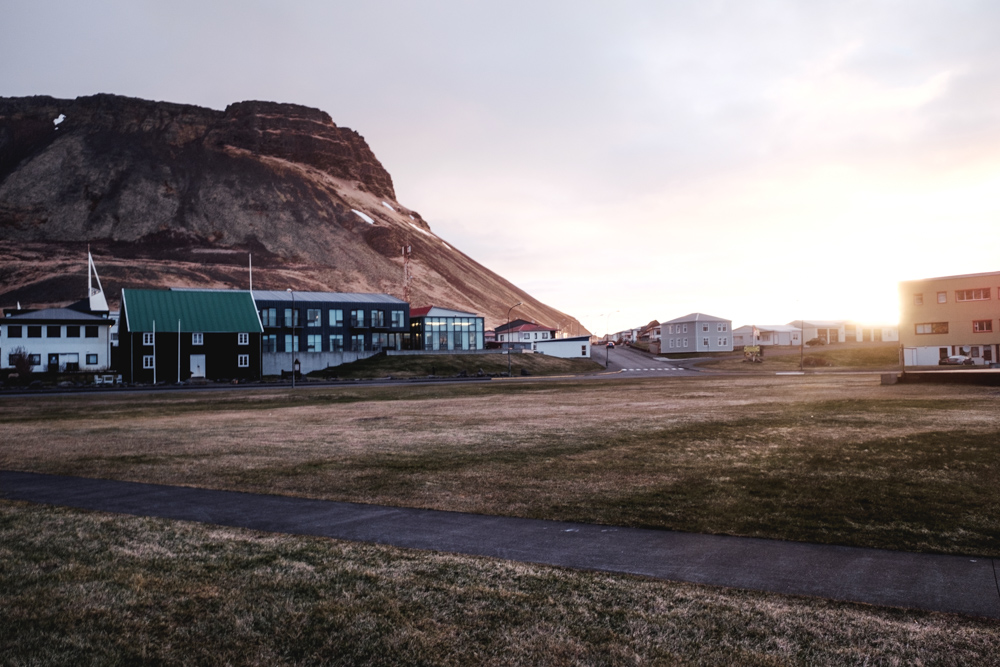
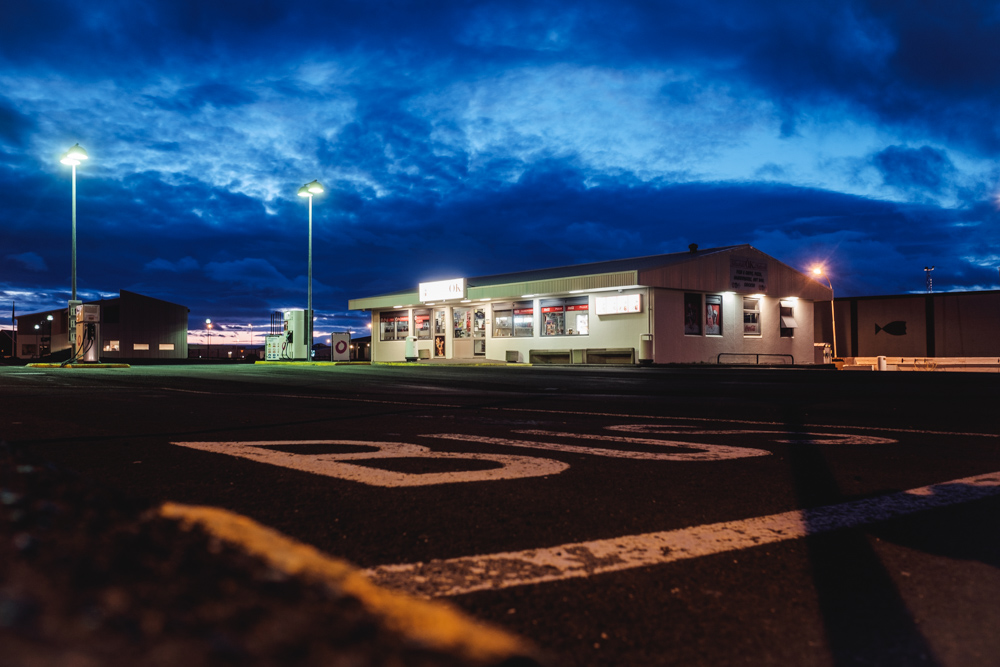
The town went to bed, the sky turned dark oh-so-slowly. And then eventually a new car arrived on the back of a truck. We drove home through the darkness. I could see on the satnav we were driving over fjords and through deep passes but the darkness cloaked everything. On the two hour drive home in the early hours of the morning we didn’t pass a single other motorist.
Day 5 - Snaefellsness Peninsula and Home
We had pretty much a full day left before our flight, so we went back to Olafsvik and resumed our meandering through the peninsula. The wind was stronger than the previous day and camper vans lay on their sides in roadside ditches. Spray from lakes was carried across the road in front of us and the little Suzuki shook. Just total nature.
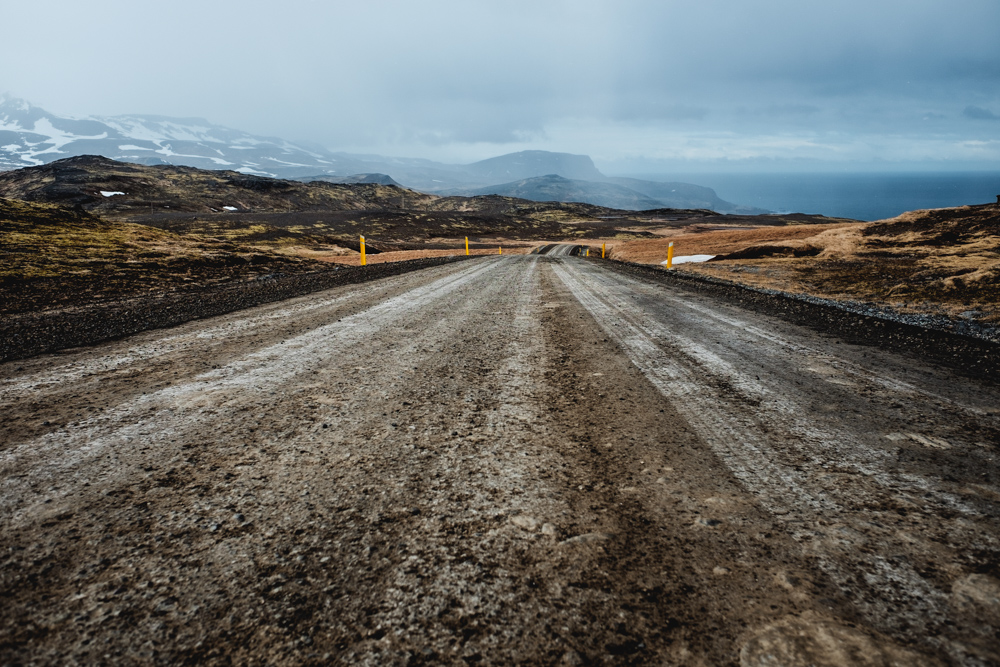
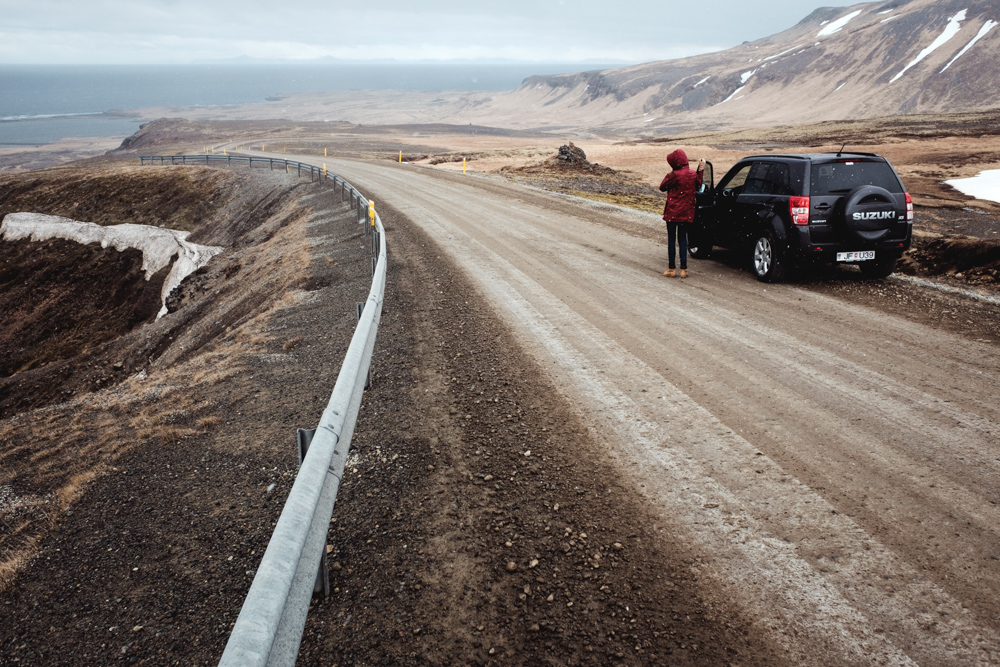
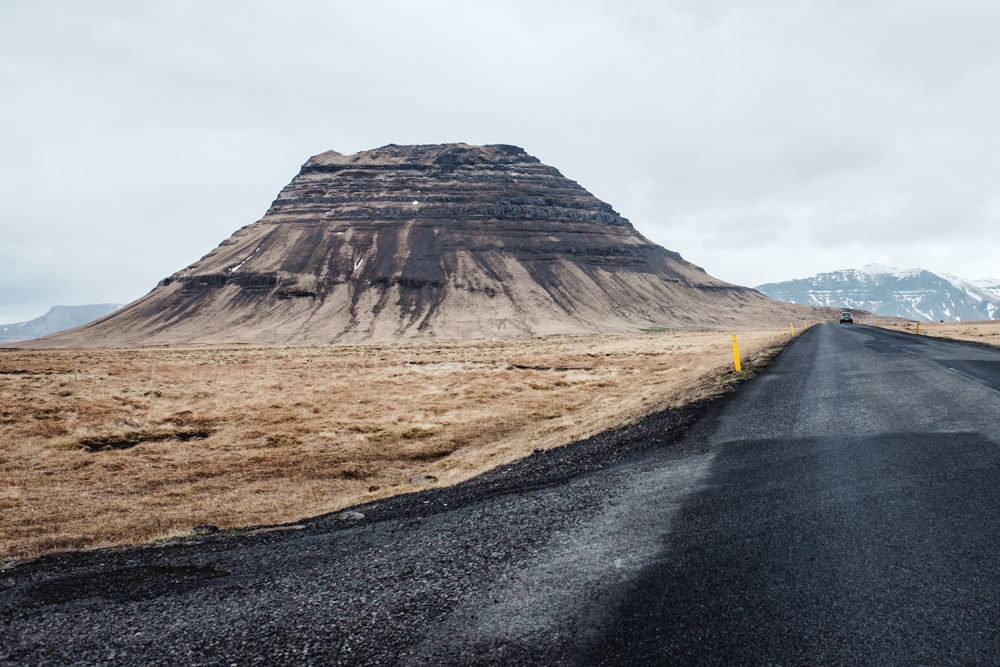
It’s this that is my overriding memory of Iceland. It’s the road stretching up from Vik in the South to Olafsvik in the North West that makes me want to go back. I want to go further into the North and East - right around the ring road - because next time we know what the true nature of Iceland is. It’s the vast open wilds away from everybody else. I know, there’s a road and a car and 3G and bloggers and lamb. It’s not a journey into the Himalayas or crossing the Andes. But it’s enough for me and it’s the furthest away from the relentless pace of life you can be on this continent. You don’t need vaccines, months of preparation, visas and satellite phones. It’s simply a two hour flight out of Manchester that takes you back 20,000 years.
A Short Note on the Photography
Before I posted the two posts on Iceland I spoke about downsizing my photography kit to just a Fuji X70. All the images here (and on the previous post) were taken with either the Fuji or my iPhone. Although I shot in RAW, most of the shots I've used are straight-from-camera jpegs via Lightroom. Using a fixed focal length gives some coherence to the story (the iPhone shares the same 28mm equivalent focal length of the Fuji X70) . I know for a fact that if I'd taken the DSLR I'd have come back with far less variety of images and we'd probably still be somewhere around the Golden Circle as I set up each shot meticulously. Maybe one of the reasons I enjoyed Iceland so much was the freedom from feeling any pressure going there as a photographer. For 5 days I was just another tourist with a compact camera and it rocked :)
In fact the only frustration came with the drone. Aerial shots are definitely the best way to capture the scale of Iceland - but the wind (endless, relentless wind) made flying it impossible most days. By all means take your drone, but be prepared to either leave it in its case most of the time or risk losing it.
Iceland Video
Everything I've already shown you, but with more movement and waving.


